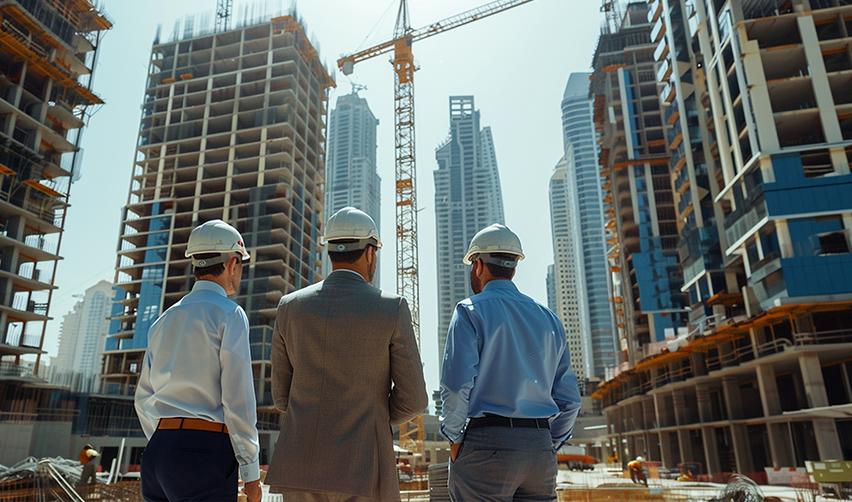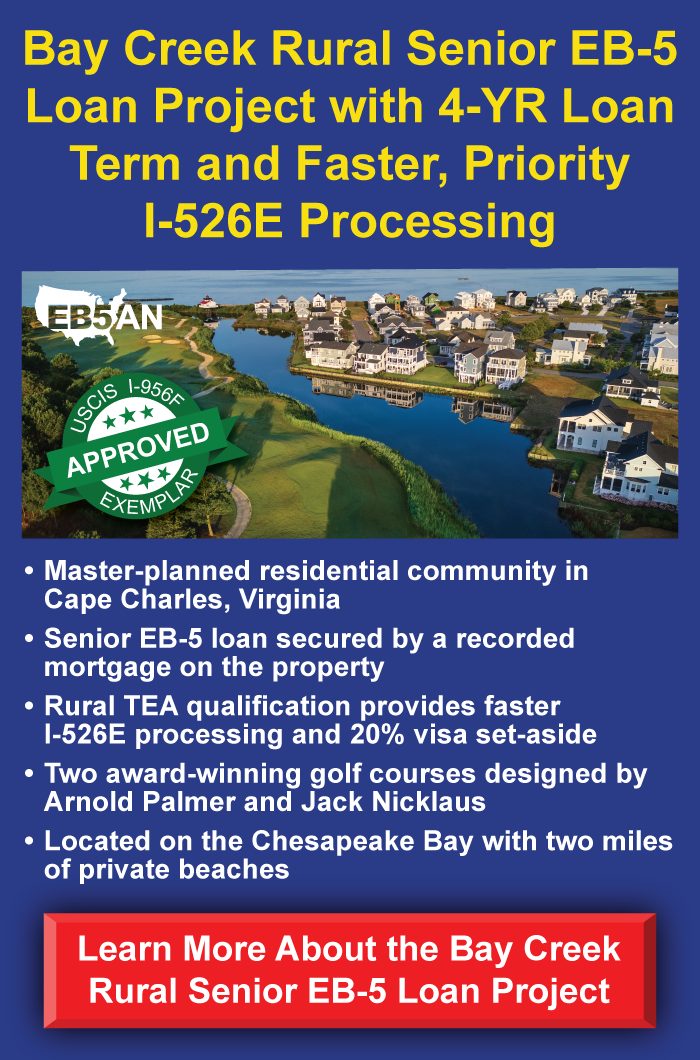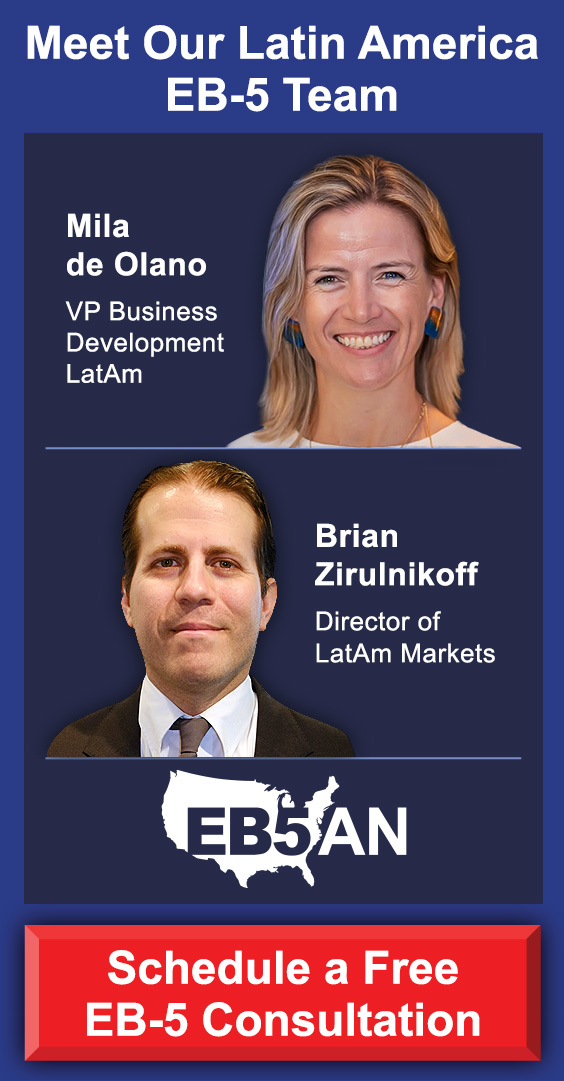When evaluating an investment in an EB-5 project, conducting comprehensive due diligence on your target project is crucial.
One powerful yet often underutilized way to gather valuable insights is by visiting the project site in person. While online resources, webinars, project materials, and phone calls can all provide helpful information, there is no substitute for physically stepping onto the ground where you are investing your capital and future. From walking the neighborhood to verifying construction progress, site visits offer an unmatched hands-on perspective that helps you make an informed decision.
In this article, we’ll explore exactly why site visits are so important and how this “real-world” approach can provide additional insight into an EB-5 project.
Real Estate Markets Can Vary From Block to Block
Walking the Neighborhood
Speaking With Neighbors
Visiting the Sales Center
Speaking With the On-Site Sales Team
Verifying Construction Progress
EB5AN Can Help Arrange Site Visits
Real Estate Markets Can Vary From Block to Block
One of the key reasons site visits are so important is the hyper-local nature of real estate. The local economy, traffic patterns, public amenities, sense of safety, and the community’s overfall feeling can vary dramatically from one block to the next
Even in the age of Google Maps and digital walkthroughs, small details simply do not show up on a screen. A construction site’s surroundings, the level of foot traffic on a residential street, or a new restaurant opening around the corner can all give you vital clues about a project’s future success.
For EB-5 investors, whose funds are typically tied up for several years, understanding these nuances is particularly important. Whether investing in a residential condominium tower, a mixed-use development, or a hotel, you want to ensure that the area can support the growth and demand for the project’s intended use.
A half-hour drive around the neighborhood can reveal an enormous amount of information that photos and videos alone might miss. Local developments may suggest rising property values, while vacant lots or dilapidated buildings might raise concerns.
By setting foot in the area, you gain context about the project’s strengths and weaknesses that is difficult—if not impossible—to capture remotely.
Walking the Neighborhood
One of the most straightforward and illuminating aspects of an on-the-ground visit is simply walking the neighborhood.
As you explore the surrounding streets, you can observe the local businesses to get a sense of the area’s economic vitality. Thriving shops, busy restaurants, and services that cater to residents and visitors alike often indicate long-term growth potential.
While taking in the atmosphere, pay attention to foot traffic and overall security. Notice whether the streets are bustling or deserted and whether you feel safe as you move around. This firsthand experience offers immediate insights into the long-term desirability of the location.
As you stroll, also keep an eye out for local amenities such as parks, community centers, schools, and accessible public transportation. These resources add to a neighborhood’s overall appeal, helping boost property values and rental demand.
In addition, look for any signs of new developments, such as construction projects, infrastructure upgrades, or ongoing renovations. These changes can point to a growing area where real estate values may be on the rise.
By taking a physical tour, you gather the small but critical details that imbue an investment decision with real-world information and feel. This grounded perspective helps you visualize the project’s future prospects and how well it aligns with local market demand.
Speaking With Neighbors
While photos and promotional materials highlight a project’s attractive features, nothing replaces candid conversations with local residents.
By speaking with neighbors, you can get a sense of how the community feels about the project and learn about broader developments in the area. Residents may share personal stories about property value trends, local businesses, and the type of people moving in. They can also offer insights into potential obstacles—such as local opposition to new construction, infrastructure challenges, or changes in zoning regulations.
These local opinions can help you decide whether the project is likely to be embraced or resisted by the community. That acceptance—or resistance—can impact whether the project is completed on time, manages to operate smoothly, and ultimately appreciates in value.
For EB-5 investors, who often must keep their money in a project for a multi-year span, this knowledge is critical. Neighbors are often the ones with the best on-the-ground insight about day-to-day life in the area and how well the project fits into it.
Visiting the Sales Center
In many real estate developments, particularly for residential and mixed-use projects, a sales center serves as the public face of the venture.
Visiting this space offers a dual opportunity: You can observe how the project is being marketed to potential buyers or tenants, and you can engage in direct conversation with the on-site sales team.
Typically, the sales center includes a detailed model of the project, floor plans, sample units or mockups, and other visuals that illustrate what the completed development will look like. This immersive experience helps you grasp the project’s aesthetic and functional design.
As an EB-5 investor, you will want to scrutinize the marketing materials and messaging on display and ensure they align with the information provided in official EB-5 documents. Do they accurately reflect the project’s intended timeline, amenities, and target audience? Any discrepancies might be minor, but they could also be a red flag, and you should certainly clarify why you found any differences.
It is also wise to inquire about sales volume and demand by asking about reservation rates, pre-sales, or tenant interest. A strong level of demand can bolster confidence that the project will meet its revenue goals.
Additionally, pay attention to the professionalism and knowledge of the sales team, as these traits often indicate a well-managed, well-coordinated development. If the staff members are responsive and well-informed, it signals that you are dealing with an organized operation.
Having the chance to experience the sales center in person allows you to determine whether the project’s marketing resonates with you. Any concerns or questions that arise can be addressed in real time by speaking directly with the team, ensuring you leave the visit with greater clarity and peace of mind.
Speaking With the On-Site Sales Team
Beyond observing how the sales center operates, taking time to speak at length with the on-site sales team can be extremely valuable. These representatives typically possess in-depth knowledge about the project’s design features, construction milestones, and unique competitive advantages within the local market.
During these conversations, you may want to inquire about the project’s projected completion dates, focusing on if construction is on schedule and if there have been any delays or changes to the scope of the project. It’s also wise to discuss the development’s standout amenities and design elements to understand precisely what sets it apart in the neighborhood.
Additionally, addressing the project’s pricing strategy can help you grasp how pre-sale prices or lease rates have evolved over time, as well as how they measure up against similar properties nearby. You may also wish to learn about the types of buyers or tenants who have shown the most interest—whether they are families, young professionals, retirees, or a broader mix. These conversations provide a deeper understanding of the project’s positioning in the local real estate market, allowing you to cross-check official statements and uncover any inconsistencies between what you’ve read in the documents and what the sales team is reporting.
Such firsthand information is immensely helpful in determining whether the project is likely to fulfill your expectations as an EB-5 investment—both by creating the required jobs and by returning your funds to you.
Verifying Construction Progress
One of the most crucial aspects of a site visit—especially if the project is already under construction—is seeing firsthand how far the building process has progressed.
Construction delays can have major repercussions for your return on investment and may also impact the EB-5 immigration process. By touring the site in person, you can assess the scope of the development, verify whether major structural work has been completed, and gauge how actively the crews are working.
During your walkthrough, pay particular attention to key construction milestones, such as whether the project has reached major benchmarks like pouring the foundation or completing the frame. The presence of a busy construction area with numerous workers also suggests that the project is moving forward efficiently.
Don’t hesitate to ask for an updated timeline and clarification on any delays or changes, as this knowledge will help you set realistic expectations. Additionally, note whether the site appears well-organized and compliant with safety standards. Such attention to detail and adherence to local regulations often signal a professional and reliable development team.
Lastly, being able to visually track the project’s progress—possibly by visiting the site over time—can provide a significant level of reassurance, particularly when you compare what you see on the ground to the developer’s original projections. This firsthand observation allows you to form a clearer picture of whether the construction is truly on pace to meet its projections and your financial and immigration goals.
EB5AN Can Help Arrange Site Visits
At EB5AN, we understand that visiting an EB-5 project site is one of the most powerful ways to conduct thorough due diligence and ensure you’re making an informed decision. That’s why our team is eager to arrange site visits for any prospective EB-5 investor who is exploring one of our projects.
Real estate is profoundly local—what appears promising on paper or in a virtual tour may look entirely different in person, and that difference can mean the success or struggle of a project. That’s why we believe that meeting the people involved, exploring the neighborhood in person, observing ongoing construction, and getting a sense of the local market can significantly inform your decision-making process and boost your overall confidence in the investment.
While online research is a valuable starting point, a physical site visit enables you to see the subtleties of the project environment and community support. This knowledge is incredibly important for making a decision that could influence your financial future and your path toward permanent U.S. residency.
In our 10+ years of operation, EB5AN has helped more than 2,300 families from 70 countries relocate to the United States as lawful permanent residents—and this help has included countless site visits to our first-rate, low-risk EB-5 regional center projects for both prospective and current investors.
If you would like to schedule a site visit or have questions about making an EB-5 investment, schedule a free consultation with EB5AN.







